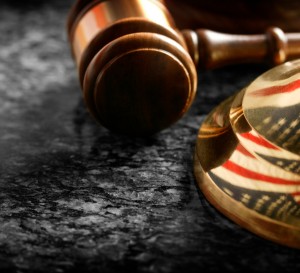- Best Buy Alleged Overtime Wage Violations: Is this a Potential Class Action?
- Can Children Sue You for Putting Baby Photos on Facebook?
- Woman Sues Starbucks for $5M Over Too Much Ice in Its Drinks
- Lyft Settlement rejected by Judge Chhabria
- RackSpace Hosting - Class Action Investigation
- Nexus 5 WiFi Problem Investigation
- How to Lemon a Car
- Ashley Madison Hack Leads to a $578 Million Class Action Lawsuit
- Touch Of Modern Being Sued for SPAM
- Do You Trust Doctors More Than Lawyers? Here’s Why You Shouldn’t
The Structure of US Federal Courts

The US federal courts have a three-part structure:
- Supreme Court
- Courts of Appeals
- District Courts
The highest level in the federal judiciary is the Supreme Court. It consists of the Chief Justice of the United States and eight associate justices who are nominated by the President and confirmed by the Senate. Overall the Supreme Court consists of 9 justices meeting in Washington, D.C. The Supreme Court hears most cases on appeal. Litigants wishing their case to appeal from a State Supreme Court or from a Federal Court of Appeals must file for a “writ of certiorari”, which is a legal document that allows the case to proceed. If less than four Justices agree to hear the case, the Court denies cert and the decision of a lower court is the final.
The Federal Court of Appeals is the middle stage in the US Federal Courts structure. The Court of Appeals is divided into 12 regional circuit courts of appeals and 1 US court of appeals for federal circuit. The courts of appeals hear appeals from 94 judicial district (trial) courts located within its circuit as well as appeals from decisions of federal administrative agencies. US court of appeals for federal circuit has a nationwide jurisdiction to hear specialized cases such as patent laws and cases decided by the Court of International Trade and the Court of Federal Claims.
District (trial) courts are in the lowest level in the federal system. District courts have the jurisdiction to hear almost all categories of federal cases involving both criminal cases and civil cases. There are 94 judicial districts across the country each of which handles bankruptcy matters. In almost all cases bankruptcy cases are filed in the Bankruptcy Court.
There are also two special trial courts that handle certain types of cases- the US Court of International Trade and the US Court of Federal Claims. The US Court of International Trade addresses cases related to the international trade and customs issues. The US Court of Federal Claims hears claims against the United States, such as monetary damages, disputes over federal contracts, etc.


You must be logged in to post a comment Login